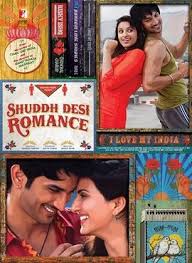In a world where love and heartbreak intertwine, this film beautifully encapsulates the journey of two troubled souls finding solace in each other. Released in 2020, All the Bright Places stars Elle Fanning and Justice Smith in lead roles, bringing their characters to life with depth and sincerity. Set in the picturesque yet haunting backdrop of Indiana, the film takes place in the present day, making it relatable to a contemporary audience. This romantic drama, adapted from Jennifer Niven’s novel, delves into themes of love, mental health, and the profound impact of loss.
The story revolves around Violet and Finch, two high school students grappling with their emotional scars. After a chance encounter at the edge of a bell tower, they form an unlikely bond that leads them on a journey across their hometown, exploring not only the beauty of their surroundings but also the complexities of their inner worlds. Violet, played by Elle, is still reeling from the tragic loss of her sister, while Finch, portrayed by Justice, is a free-spirited young man who struggles with his own demons. As they embark on various adventures, their connection deepens, but so do the challenges they face. The narrative intertwines moments of joy with profound sadness, creating a poignant exploration of mental health and the importance of human connection.
One of the film’s standout elements is the powerful acting from both Elle and Justice. Elle’s portrayal of Violet is raw and heartfelt; she embodies a character trapped in grief, yet searching for a way to move forward. Her performance shines in the quiet moments, where subtle expressions speak volumes about her inner turmoil. Justice brings a vibrant energy to Finch, striking a delicate balance between charm and vulnerability. His character’s complexity unfolds beautifully throughout the film, showcasing Justice’s range as he navigates Finch’s struggles with mental health. The chemistry between the two is palpable, making their relationship feel authentic and relatable, which is essential for a film centered on emotional connection.
The direction by Brett Haley effectively captures the essence of the story while maintaining a delicate balance between lightness and gravity. Haley’s vision allows for a seamless blend of humor and heartbreak, ensuring that the audience remains invested in the characters’ journeys. The pacing is well-handled, with moments of introspection woven into the narrative without losing momentum. Each scene contributes meaningfully to the overarching themes, making the film feel cohesive and thoughtfully constructed. The editing complements this vision, allowing the emotional beats to resonate without feeling rushed or dragged out.
Visually, the film is stunning, thanks to the cinematography by Sam Levy. The picturesque locations of Indiana are beautifully captured, with vibrant colors and sweeping shots that evoke a sense of nostalgia and longing. The cinematography enhances the emotional weight of the story, using visual storytelling to reflect the characters’ states of mind. For instance, scenes shot during the golden hour symbolize hope and connection, while darker moments use shadows to emphasize the characters’ struggles. This attention to detail in visual aesthetics elevates the film, drawing the audience deeper into Violet and Finch’s world.
The musical score, composed by Elias Khouri, further amplifies the emotional landscape of the film. The music seamlessly transitions from uplifting melodies during moments of joy to more somber tones that reflect the characters’ pain. Songs from various artists punctuate key scenes, enhancing the emotional impact and enriching the viewing experience. The soundtrack complements the narrative, capturing the essence of youth and heartbreak, making it a character in its own right.
However, while the film excels in many aspects, it does face criticism regarding its handling of sensitive topics. Some viewers may feel that the portrayal of mental health, particularly Finch’s struggles, could have been explored in greater depth. At times, the narrative may appear to romanticize certain aspects of mental illness, potentially glossing over the complexity and seriousness of such issues. Nonetheless, the film does open up a dialogue about mental health, encouraging viewers to engage with the topic more thoughtfully.
In conclusion, All the Bright Places is a heartfelt exploration of love, loss, and the healing power of connection. Elle and Justice deliver captivating performances that draw the audience into their emotional journeys, while the direction, cinematography, and musical elements create a rich and immersive experience. Despite some criticisms regarding its treatment of mental health, the film successfully shines a light on the importance of human connection in the face of adversity. For anyone seeking a poignant love story that tackles real-life issues with sensitivity, this film is a must-watch. Prepare to laugh, cry, and reflect as you accompany Violet and Finch on their transformative journey through both the bright and dark places of life.







